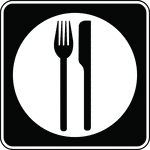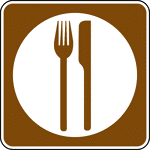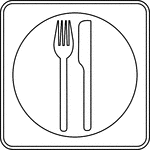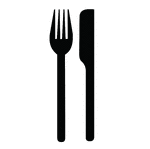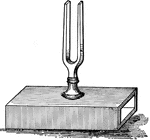Clipart tagged: ‘fork’
Digging-Fork
"The spade is commonly used for digging and trenching, but much of this work is now better done by means…
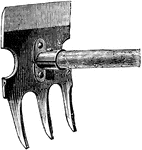
Drag Hoe or Pitchfork
A drag hoe or pitchfork is a similar design to the draw hoe and fork combined.
Draw Hoe and Fork Combined
This is a combination draw hoe. It is also called a mattock or fork. It also known as a pitchfork.
Flat-Tined Digging Fork
This type of fork has four flattened prongs. It is ideal for ordinary kitchen garden work, such as lifting…

Combination Spoon and Fork
This spoon form combination can also refer to a spork, or foon. A hybrid form of cutlery which takes…

Eleven Loop Fork
The utensil is used to lift food to the mouth or to hold food in place while cooking or cutting it.…

Improvised fork
"The ordinary spading-fork, with strong, flat tines, is a most serviceable tool; but a good spading-fork…

Hand-fork
"The hand-fork, a short-handled three-tined implement, is extremely handy for many purposes, such as…

Fork-Tailed Kite
"The fork-tailed kite, (N. furcatus) is twenty-five inches long; the wings and tail black;…

Man with Fork and Knife
An illustration of a man holding a fork and knife in his hands and with a napkin wrapped around his…

Fork-Tailed Psalurus
Native to South America, the males of this species are known for their pair of prominent tail feathers.
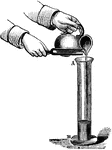
Demonstration of Resonance Using a Tuning Fork and Water Column
"Hold a vibrating tuning fork over the mouth of a cylindrical jar about 10 or 18 inches deep, and notive…

Home-made scarifier
"Represents a slicing-hoe made by fastening a sheet of metal to the tines of a broken fork." —…
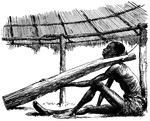
Slave Fork
"A forked branch of a tree, four or five feet long, used by slave-hunters in Africa to prevent the slaves…
Barbed and Forked Spike
"A large nail or pin, generally of iron. The larger forms of spikes, particularly railroad spikes, are…

Forked Spikes
"A large nail or pin, generally of iron. The larger forms of spikes, particularly railroad spikes, are…

Tuning Fork
A tuning fork is an acoustic resonator in the form of a two-pronged fork with the tines formed from…
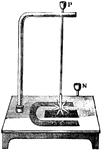
Wheel Rotation
"Rotation of a Wheel. The same force which throws the wire away from the mercury, will cause the rotation…
